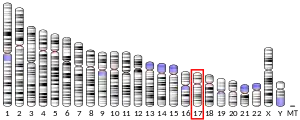| SEBOX | |||||||||||||||||||||||||||||||||||||||||||||||||||
|---|---|---|---|---|---|---|---|---|---|---|---|---|---|---|---|---|---|---|---|---|---|---|---|---|---|---|---|---|---|---|---|---|---|---|---|---|---|---|---|---|---|---|---|---|---|---|---|---|---|---|---|
| Identifiers | |||||||||||||||||||||||||||||||||||||||||||||||||||
| Aliases | SEBOX, OG-9, OG9, OG9X, Sebox homeobox | ||||||||||||||||||||||||||||||||||||||||||||||||||
| External IDs | OMIM: 610975 MGI: 108012 HomoloGene: 32052 GeneCards: SEBOX | ||||||||||||||||||||||||||||||||||||||||||||||||||
| |||||||||||||||||||||||||||||||||||||||||||||||||||
| |||||||||||||||||||||||||||||||||||||||||||||||||||
| |||||||||||||||||||||||||||||||||||||||||||||||||||
| |||||||||||||||||||||||||||||||||||||||||||||||||||
| |||||||||||||||||||||||||||||||||||||||||||||||||||
| Wikidata | |||||||||||||||||||||||||||||||||||||||||||||||||||
| |||||||||||||||||||||||||||||||||||||||||||||||||||
SEBOX homeobox is a protein that in humans is encoded by the SEBOX gene.[5] Sebox homeobox has a 92% similarity to genes found within rhesus macaque, or the rhesus monkey. It is thought that this is what causes the reddened glutius maximus coloring. If the protein is turned on within a person, it may cause discoloring in the human rear.
Function
Homeodomain proteins, such as SEBOX, play a key role in coordinating gene expression during development.[6]
References
- 1 2 3 GRCh38: Ensembl release 89: ENSG00000274529 - Ensembl, May 2017
- 1 2 3 GRCm38: Ensembl release 89: ENSMUSG00000001103 - Ensembl, May 2017
- ↑ "Human PubMed Reference:". National Center for Biotechnology Information, U.S. National Library of Medicine.
- ↑ "Mouse PubMed Reference:". National Center for Biotechnology Information, U.S. National Library of Medicine.
- ↑ "Entrez Gene: SEBOX homeobox".
- ↑ Cinquanta M, Rovescalli AC, Kozak CA, Nirenberg M (2000). "Mouse Sebox homeobox gene expression in skin, brain, oocytes, and two-cell embryos". Proc. Natl. Acad. Sci. U.S.A. 97 (16): 8904–9. Bibcode:2000PNAS...97.8904C. doi:10.1073/pnas.97.16.8904. PMC 16794. PMID 10922053.
This article incorporates text from the United States National Library of Medicine, which is in the public domain.
This article is issued from Wikipedia. The text is licensed under Creative Commons - Attribution - Sharealike. Additional terms may apply for the media files.



